Haunted by 2019 protests, Tehran avoids fuel price hike
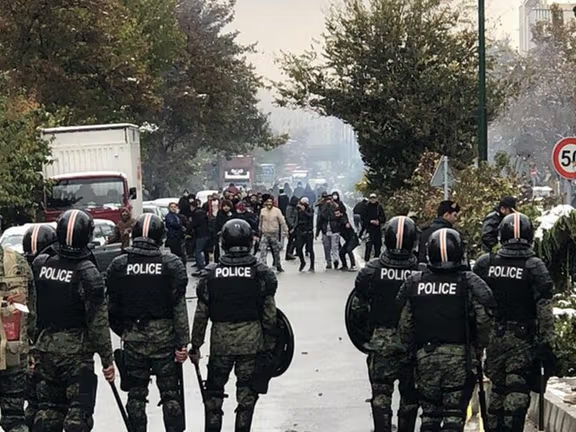
Tehran is once again tiptoeing around the issue of gasoline prices under the long shadow of November 2019 protests that became one of the bloodiest crackdowns in the Islamic Republic’s history.
Iran International

Tehran is once again tiptoeing around the issue of gasoline prices under the long shadow of November 2019 protests that became one of the bloodiest crackdowns in the Islamic Republic’s history.
Fuel prices are among the most politically volatile subjects in Iran. Even the suggestion of a change triggers anxiety across the political system.
As the popular news website Bartarinha warned this week: “The country’s fragile condition … is such that even raising the possibility of price increases can trigger a wave of apprehension and unpredictable reactions.”
The memory driving those fears is never far. Six years ago, a sudden overnight hike in gasoline prices—50% for subsidized fuel and far more above quota—sparked nationwide unrest within hours.
It was one of the fastest-spreading waves of dissent since 1979 and remains a raw national trauma.
“Those who witnessed Aban 98 can never laugh from the bottom of their hearts for the rest of their lives,” an X user going by his first name Hamed wrote, referring to the unrest by its name in the Persian calendar.
“We have just stayed alive to see the day of revenge.”
Risking reform
Economists say the current model is untenable: the real cost of imported gasoline has risen to 700,000 rials (around 65 cents) per liter, while subsidized retail prices remain just over 1 cent per liter.
The burden on the government’s budget is estimated at $6 billion this year.
President Masoud Pezeshkian has vowed to overhaul Iran’s vast and costly subsidy system, but the political danger is hard to ignore.
Authorities insist the monthly quotas (60 liters at 1.3 cents and 100 liters at double that) will remain unchanged, at least for now. Every statement from officials is carefully calibrated to reassure and to avoid even the perception of a looming price hike.
Shadow of Aban
The 2019 protests were not just about fuel; they exposed deeper anger over corruption, inequality and political inertia. But it was gasoline that lit the fuse.
The shock announcement came in the early hours of 15 November, without debate or warning. Within hours, demonstrations spread across dozens of cities, many in working-class communities hit hardest by inflation and sanctions.
Protesters quickly turned to broader political slogans, including calls for the overthrow of Supreme Leader Ali Khamenei.
The state responded with speed and unprecedented force. The country was cut off from the global internet for nearly a week, making independent reporting almost impossible. Security forces used live ammunition, often aimed at heads and torsos, according to rights groups.
Amnesty International confirmed at least 321 deaths; Reuters, citing Iranian officials, reported about 1,500.
Thousands were arrested. Some—like Erfan Saberi-Movahed—disappeared and remain missing. At least two protesters, Kamran Rezaei and Hani Shahbazi, were later executed on charges of “waging war against God.”
For Iran’s political class, Aban 98 remains the ultimate cautionary tale, a potent reminder of how quickly economic frustration can ignite national revolt.
And that is why, six years later, even whispering about gasoline prices continues to terrify Tehran.

The sudden closure of the Tehran Design Week exhibition at Tehran University has ignited a storm of reactions—from hardline groups that pushed for its shutdown to students and sympathizers who lamented the decision.
The university closed the exhibition at its Fine Arts Faculty despite thousands queuing to visit each night following a sharply worded protest from the faculty’s Student Basij militia, which accused the event of turning the campus “into a venue for displaying deviance from norms.”
Videos circulating from the event showed female attendees without the mandatory veil, men and women freely mingling and live music performances with political undertones—scenes that angered conservative groups.
Senior cleric Mostafa Rostami, who heads the nationwide body of the Supreme Leader’s representatives to Iranian universities, called the event a “bitter incident.”
“Turning art into anti-culture and non-art is the result of a planned operation to target universities,” he posted on X, suggesting the event was a foreign plot. Authorities, he added, “will not yield one bit” when it comes to preserving Islamic norms.
Too Western
Conservative media also joined the backlash.
The hardline tabloid Saed News lamented the live music and unveiled visitors in a story headlined, “Tehran University’s Disgrace Outraged Everyone: How Far in Breaking Taboos?”
Mashregh News, aligned with the Revolutionary Guards, accused private brands and designers of using Design Week as a marketing opportunity, relying “heavily on Western visual patterns” and even featuring unveiled women in promotional materials.
Many attendees, meanwhile, expressed disappointment at the event’s abrupt end.
Architect and former lecturer Mona Khatami wrote on X: “I was so happy that an event like this had brought people into the university, but as usual, our joy didn’t last long: today they cancelled it.”
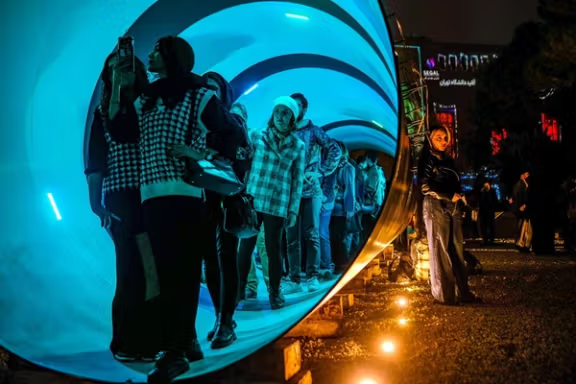
'We are the many’
The University of Tehran initially announced that the exhibition was being stopped “because of unprecedented crowding” and “safety risks linked to the visual installations and electrical equipment.”
But few believed the explanation.
“We expected something to happen all along,” Arshiya, an art student, told Iran International. “Every section of the exhibition … reminded those who have the power to stop such events that we are many and they are few.”
An underground activist group, the Progressive Students of Isfahan University, described Tehran Design Week on X as an expression of “modernism, opposition to the compulsory hijab and gender segregation and youth liberation,” calling it a symbol of resistance to regressive cultural controls.
‘Sad but expected’
One especially contentious element of Design Week was its fashion section, held at private venues, where models and designers presented contemporary clothing including outfits worn without the veil.
Videos from these showcases appear to have played a central role in provoking the conservative backlash, with critics framing the relaxed dress and atmosphere as a direct challenge to state-imposed norms.
A commentary in the moderate outlet Rouydad24 argued that organizers had crossed Tehran University’s cultural “red lines,” predicting that future design exhibitions in similar venues may face increased restrictions.
It also noted that the sight of visitors openly defying hijab rules on the Tehran University campus echoed “a message rooted in the 2022 protests,” in which students played an influential role.
As the commentary put it: “It is clear that the factions that for four decades have spared no effort to silence dissent within the university were never going to remain quiet in the face of such a display.”
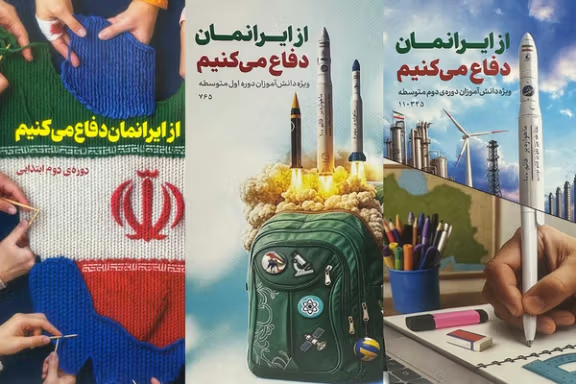
A new school curriculum mandated by Iran’s education ministry has cast a 12-day war with Israel in June as a national triumph, underscoring a bid by the country's clerical rulers to boost support following the punishing conflict.
Under a new directive titled “We Defend Our Iran,” the ministry ordered classes from elementary to high school to praise the actions of the country's leadership, military and people.
The new educational materials reviewed by Iran International were distributed to schools and made available online earlier this month.
The program aims to cultivate patriotic virtue, according to a directive signed by Education Minister Alireza Kazemi and circulated to provincial departments.
The initiative was “a tribute to the miraculous endurance of the Iranian nation during the 12-day imposed war,” he wrote.
New study materials, Kazemi added, seek to “strengthen national dignity, unity and deterrence,” and to raise students who can “face social and political challenges responsibly and wisely.”
Battle of narratives
As Iran-US nuclear talks appeared to falter, Israel launched a surprise military attack on its Mideast arch-foe on June 13.
The strikes killed senior nuclear scientists along with hundreds of military personnel and civilians. Iranian counterattacks killed 32 Israeli civilians and an off-duty soldier.
Joining the conflict, the United States attacked three Iranian nuclear sites and Iran responded with missile attacks on a US airbase in Qatar before US President Donald Trump enforced a ceasefire.
Israel promptly said it had achieved its military goals while Trump declared Iran's nuclear program had been "obliterated."
Tehran officialdom quickly said the US ceasefire sought to prevent further damaging missile volleys and that Iran had prevailed in the war, emerging more unified.
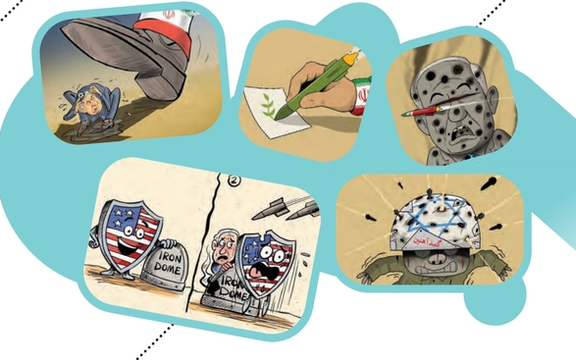
Hack Israeli jets
The new educational materials cast this doctrine as moral and patriotic truth, extending from missile engineering to nuclear research.
One high school assignment instructs pupils to “hold a class debate on the advantages and disadvantages of enriching uranium inside the country versus importing enriched uranium.”
Another adds: “Write a two-page outline for a movie in which Iranian students hack into the computer systems of Israeli fighter jets and change the course of events. Share your plan with your teacher and classmates.”
The tone is lively, even playful, framing national defense as a creative activity comprehensible to children.
Iranian officials quickly and now routinely characterize the perseverance of Iran's ruling system as a victory in itself and the messaging now extends beyond sermons and television news programs to the classroom.
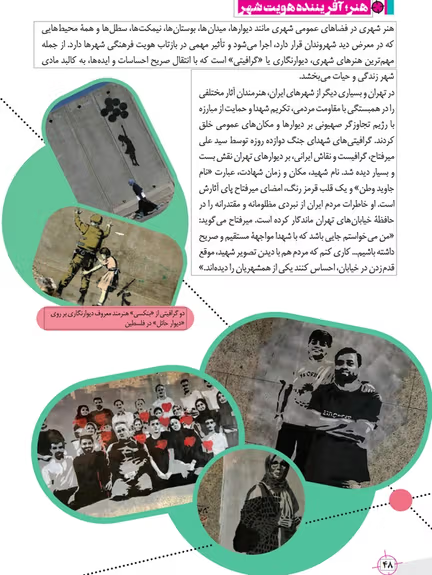
Authorities have quashed with deadly force several youth-led protest movements in recent decades and style themselves a bulwark against foreign-led sedition plots.
Still, the course materials indicate Tehran remains determined to purvey state ideology on Iran's youth.
The textbook for younger students, “The 12-Day War,” sets out twenty-five hours of classroom teaching that encourage pupils to see unity, creativity and belief as the reasons Iran prevailed. The lessons blend moral stories with political instruction and domestic detail, grounding the idea of national defense in everyday life.
In one chapter, children visit their grandparents’ home. Over tea, the adults recall the war. “Israel thought it could disrupt the country by killing our commanders,” says Uncle Hossein in the story, “but our Leader quickly appointed successors and restored order.”
The grandfather adds, “Iran had long prepared itself for defense and built powerful, precise missiles for such days.” The grandmother reminds the children that “people helped each other during those days,” while the narrator concludes, “When we are united with our Leader, like one family, we are at our strongest.”
The chapter ends with the line that gives the book its theme: “We are stronger together.” It turns survival into a moral lesson about obedience, faith and collective strength.
Elsewhere, QR codes lead to short video clips. One shows schoolgirls, around nine years old, singing, “This is Iran. If anyone looks at my country the wrong way, I will not forgive them. If needed, I will sacrifice myself. I’m a girl, but I’m strong. God is with me.”
In Islam, nine marks the age of religious maturity for girls, giving the performance a note of solemn duty beneath its cheer.
Other exercises tie national defense to civic behavior. Students are asked to draw family members helping during blackouts or natural disasters, and to write short reflections on how “science and faith together protect the homeland.”
The blending of domestic scenes, religious devotion and military imagery makes the idea of resistance feel both intimate and ordinary.

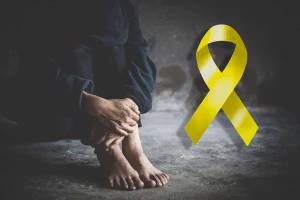
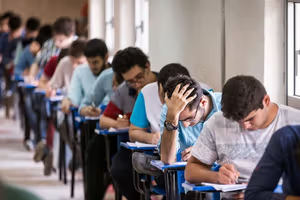
Israel 'unnatural, dangerous'
Across all levels, Israel is portrayed as the main disruptor of peace in the region and the United States as its enabler.
High-school materials offer more advanced characterizations of arch-enemy Israel, calling it an “unnatural and dangerous regime” and asks students to prove it visually. “With three simple pictures,” it instructs, “show your classmates why Israel is an unnatural and dangerous regime. For example: it has no fixed borders.”
Another prompt begins with: “In your opinion, what does the fact that the Israeli regime, unlike other countries, has no defined borders say about its nature?”
Students are then guided to make an infographic to express the point. At the top of the page, they are told to write: "Israel is unnatural and dangerous because" and fill in the rest with short captions and sketches.
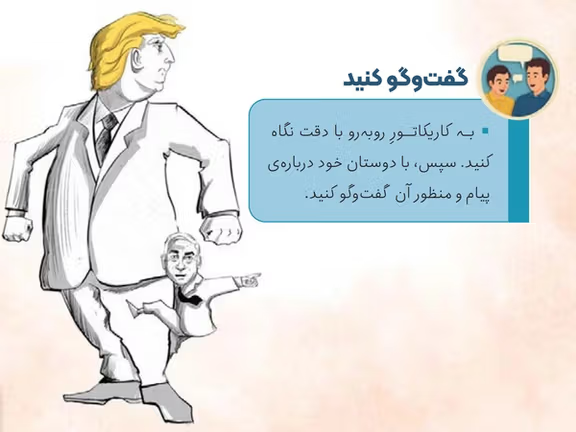
Safavid rout
In some of the new exercises, students are asked to name and build paper models of Iranian missiles and discuss how families can help defend the country.
Another passage recalls the 1514 Battle of Chaldiran, when Safavid Iran lost to the Ottomans for lacking modern weapons, a parable of vigilance and modernization.
Other sections teach how to manage blackouts or natural disasters, blending civic duty with preparedness for crisis.
The book deepens the use of national history in the curriculum, drawing on Shah Ismail Safavid and earlier dynasties alongside Islamic and revolutionary narratives, part of a broader effort to fuse religion, statehood and pride in Iranian endurance.
That emphasis mirrors the nationalist tone of Supreme Leader Ali Khamenei’s speeches following the war. Citing a coup in 1921 and the 1953 US-backed overthrow of Prime Minister Mohammad Mossadegh, he has urged Iranians to remember “both sweet victories and bitter events” so that “they are not repeated.”
He described the United States as “inherently arrogant,” blamed foreign powers for Iran’s historic setbacks, and told young people that “the remedy for many of our problems is to become strong.”
In his telling, national power in its military, scientific, and moral forms is the safeguard of independence, a message now embedded in the nation’s classrooms.
That same logic now shapes how the next generation is taught: Iran’s strength, the school materials aim to ensure, must be shored up by its next generation.
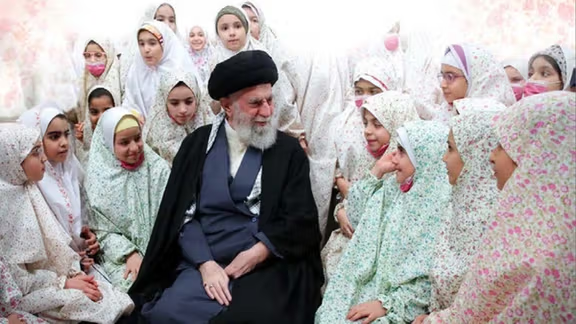
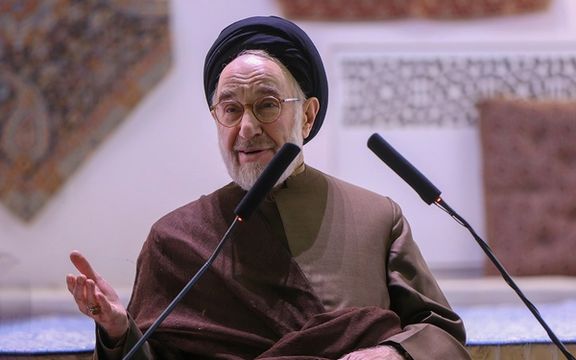
Iran’s former president Mohammad Khatami said most people in the country are more concerned with living their lives amid worsening economic conditions than with who governs them.
“Eighty percent of the Iranian people are not political in a certain sense, and it does not matter much to them who governs or how; they only want to live and to have security and a clearer outlook for the future,” Khatami said.
He said the country has never experienced a situation as severe as the one it faces now, with challenges and threats unlike anything seen since the 1979 Islamic revolution.
Khatami compared Iran’s governing system to “a sturdy tree” that had long endured hardship but now faced mounting dangers.
“This sturdy tree may be able to withstand drought and storms for many years, but today the internal and external threats and problems are so vast and significant that there is a fear this sturdy tree may suddenly wither and collapse, may that day never come,” he said.
Economic hardship
The former reformist president's remarks come as the government struggles to contain soaring prices and widening poverty.
According to Iran's Parliament’s Research Center, over a third of Iranians live in poverty.
Rising inflation and a weakening currency have helped drive up costs of living in Iran and economic pain has deepened as Western and European-triggered international sanctions compound the country's international isolation.
Earlier this month, a senior economist at Iran's Ahvaz University, Morteza Afghah, warned that annual inflation could exceed 60% by the end of the Iranian calendar year (March 2026).
Surveys say otherwise
Last week, a survey by Tehran-based news site Rouydad24 found that 92% of Iranians are unhappy with the country’s direction.
“What is clear is that total public satisfaction with all governments since the revolution is now overshadowed by a 92 percent dissatisfaction with the country’s current situation,” Rouydad24 said.
According to the outlet, the level of satisfaction with Khatami's successor Mahmoud Ahmadinejad’s administration was highest overall, while those of Hassan Rouhani and Masoud Pezeshkian ranked lowest.
Another survey conducted by a Netherlands-based polling institute last year found that the majority of Iranians would vote for either a regime change or a structural transition away from the Islamic Republic.
The Group for Analyzing and Measuring Attitudes in Iran (GAMAAN), which conducted the survey in June 2024, said it polled more than 77,000 respondents inside Iran, weighting the results to represent the literate adult population.
“A majority of the population opposes the Islamic Republic and supports changing or transforming the political system,” the report’s author Ammar Maleki said.
Only around 20 percent of respondents want the Islamic Republic to remain in power, according to the survey.
The survey found no single consensus on what system should replace the current order. A secular republic was backed by 26 percent of respondents, while 21 percent supported a monarchy.
Another 22 percent said they lacked enough information to decide, and 11 percent said that the form of an alternative system was not important so long as change occurred.
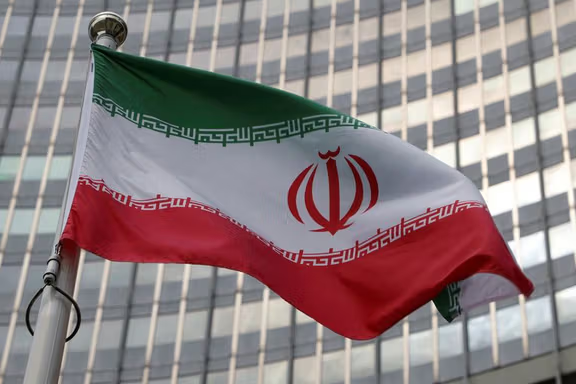
Tehran’s fraught relationship with the UN nuclear watchdog is set to enter a more confrontational phase as the IAEA Board of Governors meets in Vienna this week to vote on a Western-backed resolution censuring Iran for non-cooperation.
The looming vote has triggered a flurry of warnings and condemnations in Tehran, revealing both anxiety over renewed pressure and the contradictions at the heart of Iran’s dealings with the International Atomic Energy Agency and its director, Rafael Grossi.
Since the 12-day war with Israel, Iranian officials have accused Grossi of siding with the West, politicizing the agency’s mission and even spying for Israel and the United States.
Yet they also acknowledge that Grossi remains a crucial mediator whose cooperation—and potential endorsement—is essential if Tehran is to prove its nuclear program is peaceful and ease the standoff.
Iran denies seeking a nuclear weapon but Israel and Western countries doubt its intentions.
‘Mossad spy’
Tensions typically sharpen when Grossi adopts a firmer tone or when Tehran sees his actions as politically driven.
The tone changed dramatically after Israeli and US strikes on Iranian facilities in June 2025, when Tehran faulted Grossi for refusing to condemn the attacks and accused him of helping pave the way through “biased” reporting.
Iran’s parliament followed by approving legislation that restricts cooperation with the IAEA unless individually cleared by the government, while hardline outlets such as Kayhan—closely tied to the office of Supreme Leader Ali Khamenei—branded Grossi a “Mossad spy.”
Nevertheless, cooperation continued, culminating in a September meeting in Cairo where Grossi and Foreign Minister Abbas Araghchi signed an agreement whose details remain undisclosed and contested.
Grossi, for his part, has sought to keep diplomacy alive while castigating Tehran for “totally unsatisfactory” cooperation—yet stopping short of referring Iran to the UN Security Council.
He has stressed repeatedly that “war does not justify an end to cooperation,” framing that stance as central to his mandate.
‘Crossroads’
With the United States and the E3 preparing a resolution for the 19–21 November meeting in Vienna, Tehran appears intent on lowering the temperature.
Iranian officials have denounced the draft text as “political and destructive,” warning it would complicate relations with the West and obstruct negotiations.
Iran’s UN envoy Reza Najafi urged IAEA members to reject the resolution, while spokesman Behrouz Kamalvandi said Tehran might reassess its cooperation, potentially reducing collaboration and increasing enrichment levels.
Despite the heated rhetoric, Tehran seems acutely aware that it still needs Grossi’s public confirmation that its program is exclusively peaceful.
Araghchi and his deputies told a conference that Iran is not currently enriching uranium. But the moderate daily Arman Melli quoted him on Tuesday as saying that enrichment will continue.
Arman Melli added that “Iran’s nuclear dossier has entered a new phase, and new international reactions could alter the course of negotiations over Tehran’s nuclear program.”
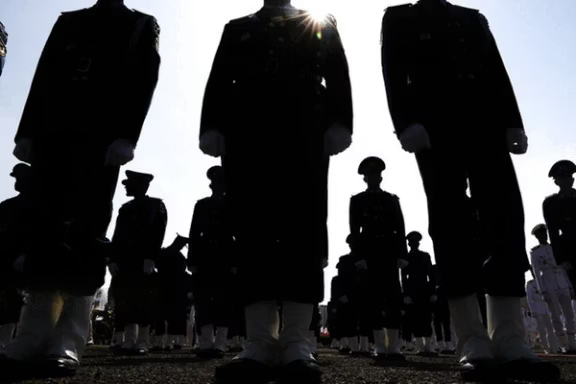
Iranian security institutions have come under growing internal pressure and suspicion since Israel’s June attacks, with accounts describing heightened oversight inside the Revolutionary Guard, The Telegraph reported on Wednesday.
According to the report, unnamed Iranian officials and security sources said this week that members of the Islamic Revolutionary Guard Corps (IRGC) and other agencies have become increasingly distrustful of one another after what the newspaper described as “extensive Israeli infiltration” during the 12-day war in June.
The report said officials inside Iran spoke of security personnel seeking to demonstrate their loyalty as investigations widen.
One senior Iranian official told The Telegraph that “many officials, including within the Sepah [IRGC], are doing everything they can to convince the system that they haven’t done anything wrong,” adding that “the Israelis have massively infiltrated several agencies.”
Another official said, “what’s becoming an even greater concern is the growing number of people who are, in one way or another, betraying the system,” according to the paper.
According to analysts cited in the report, the atmosphere of suspicion could complicate Iran’s crisis-management capabilities. “The paranoia within the IRGC risks weakening Iran’s most powerful military force and the regime’s ability to respond coherently to future crises."
Hundreds of people have been arrested on espionage charges since June and several Iranians have been executed, actions that officials speaking to the outlet described as intended to show that “the system is still functioning.”
The Telegraph also cited officials describing confusion over the status of Tehran’s regional allied forces and unease about the country’s longer-term direction.
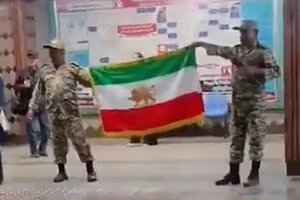

A poll by the Iranian Student Polling Agency reported public dissatisfaction at 92%, attributing the figure to Iran’s economic troubles and renewed UN sanctions after the collapse of the 2015 nuclear deal.
President Masoud Pezeshkian offered a similar note of concern in remarks to parliament last week, warning that Iran could “turn on itself” if the Supreme Leader were harmed during a crisis.
He said the country’s cohesion rests on Ali Khamenei’s leadership and cautioned that an attack on him during the June war might have triggered internal clashes “without the need for Israel to intervene.” He urged officials to avoid factionalism and to reinforce cooperation across state institutions.
Earlier in the month, the arrest of two men displaying the pre-1979 Iranian flag at a Tehran metro station sparked debate about discontent within parts of the security forces.
Despite the reported pressures, the Telegraph said experts believe the Iranian state remains structurally stable, pointing to what it called “rally-around-the-flag” dynamics during and after the June conflict with Israel.